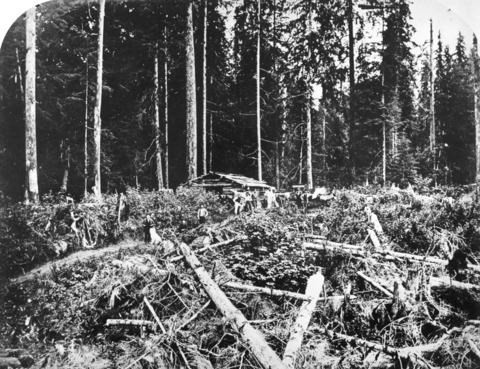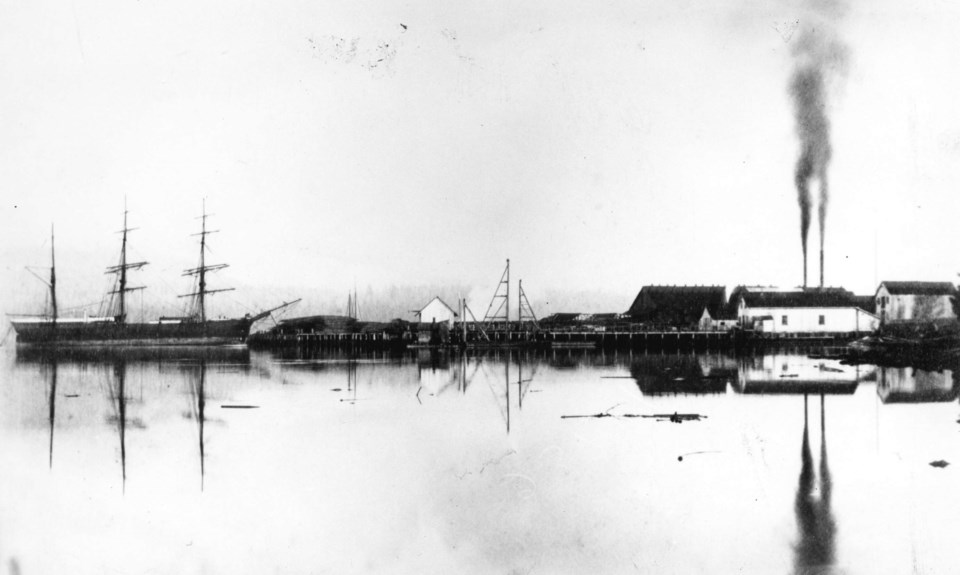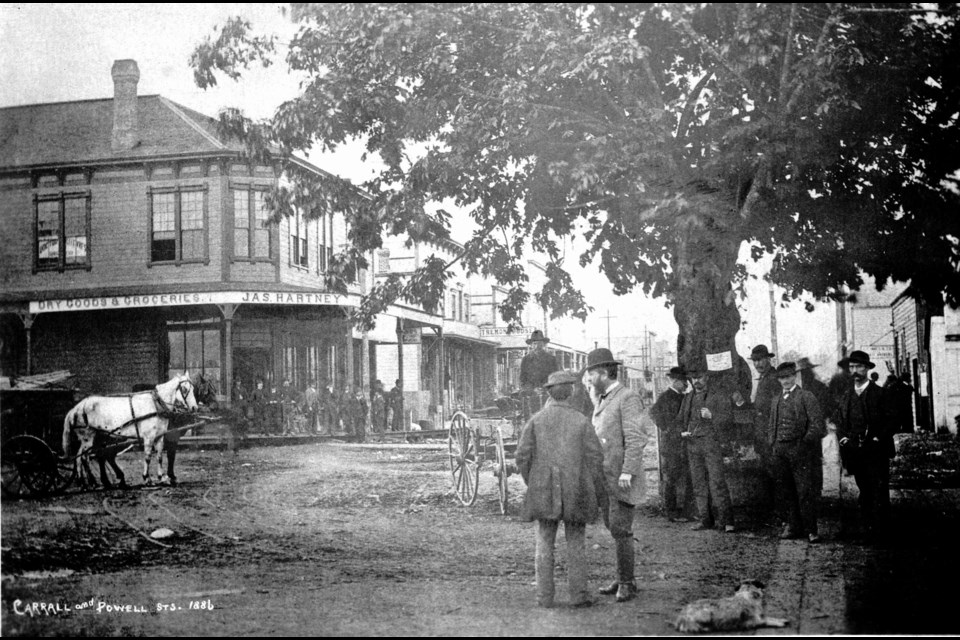Today Vancouver is one of Canada’s big cities, but 150 years ago it was a different story.
Vancouver Island and the Lower Mainland had just merged into a single entity in 1866; the British Empire previously established the two areas as separate colonies. While the fur trade and Gold Rush were drawing people to other areas of the soon-to-be province, the south coast’s stock and trade was lumber. Two sawmills were operating in the area — what would become the Moodyville Mill on the North Shore and the Hastings Mill, which stood at the foot of what is now Dunlevy Avenue.
In 1867, Hastings Mill* was cutting its first batch of lumber.

“A whole range of people were coming to work at the lumber mills,” said Jean Barman, a historian, writer and professor at the University of British Columbia. “Or people just set themselves down, found a plot of land and started farming.”
Outside the Hastings Mill property, on what would become Carrall Street three years later in 1870, was the newly constructed saloon of Captain John Deighton.
Deighton was a talkative man, known in Victorian slang as a Gasser, said John Atkin, civic historian and author.
“The men that began squatting around his saloon called their informal settlement Gassy’s Town — hence Gastown,” Atkin said.
Gastown became the centre of activity in the area and, much as it is today, was filled with shops and drinking establishments.
“It was a very free and open place,” Barman said. “It was like a small town…It was a frontier town.”

However, the area was still primarily forest.
The area’s Indigenous people, the Musqueam, Squamish and Tsleil-Waututh, had seasonal village sites along Burrard Inlet and False Creek, Atkin said. People coming to the area mostly settled around the water — in Stanley Park or along Burrard Inlet — and there were some farms farther south along the Fraser River.
The community of Eburne, today known as the Marpole area, was just beginning to grow as farmers settled in the area. It started on the Vancouver side of the river but spread south and became the agricultural centre for Sea Island and Lulu Island farmers.
Atkin described the time as a period of change for the area.
“First Nations are having to deal with settlers and the disruption of their way of life as the forest is removed and their way of life is upended, and the surveyors are beginning to lay out some of the first surveyors’ marks and boundaries on the land.”
Barman and fellow historian Bruce McIntyre Watson both said the area was a lot more inclusive at that time.
“In general, we had a much more multicultural society,” Watson said, adding that it was when European settlers started arriving that things became a lot more discriminatory.
The area was extremely isolated, accessible mostly by water, until joining Canada in 1871.
“It was an enclave where people almost had to get along because they didn’t have a choice,” Barman said.
* On Canada Day, MP Joyce Murray, in collaboration with the Native Daughters Society and Hastings Mill Store Musem, is hosting a Canada 150+ celebration of Hastings Mill. From 12 to 4 p.m., people are invited to "celebrate our country's indigenous roots and the first 150 years of nationhood" at Vancouver's oldest building. There will be live music, games, face painting, a free barbecue and birthday cake, as well as the singing of O Canada. (The official Canada 150+ ceremony is from 12:30 to 1:30 p.m.) The July 1 event takes place at Hastings Mill Park, 1575 Alma Street. People are asked to bring their own reusable plates and utensils, as well as their own chairs or blankets.
@JessicaEKerr



